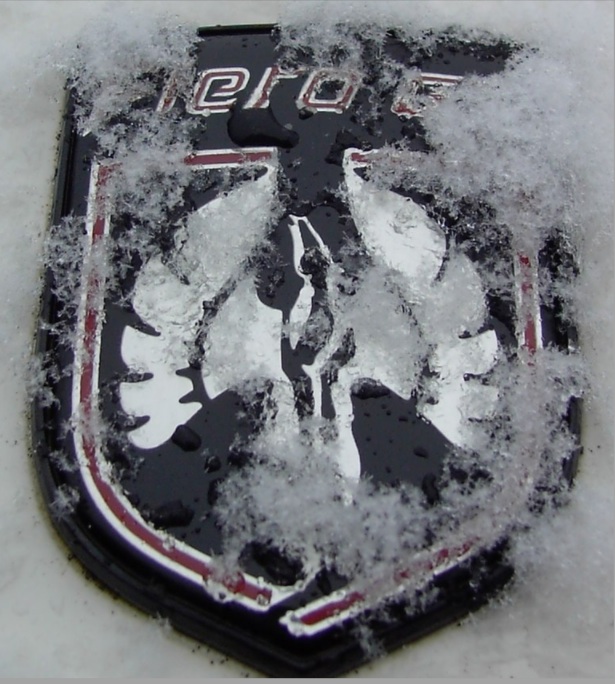
 |
CO (carbon monoxide) detectors |
Post Reply 
|
| Author | |
Dr.Fiero 
Senior Post God 
Joined: 12 February 2007 Location: Canada Status: Offline Points: 1726 |
 Post Options Post Options
 Quote Quote  Reply Reply
 Topic: CO (carbon monoxide) detectors Topic: CO (carbon monoxide) detectorsPosted: 13 November 2012 at 12:39am |
|
11:50pm - I was just awoke to the sound of some beeping.
Freaking out thinking it was a smoke alarm, I started running around the house. Found it was my CO detector in the shop going off! And the number on the display was rising!! No fire, no engine running, etc.... Well - the battery in the car had died from sitting for over 3 weeks, so about 8 hours earlier I'd put it on the charger. No, it wasn't on fire! After being woken up to all this, I did a quick net search and found this: Carbon Monoxide Detectors and Charging of Lead Acid Batteries When charging lead acid batteries, hydrogen (H2) gas is produced. Hydrogen gas is a by-product from the electrolysis reaction (charging) of the lead acid battery. Hydrogen gas can interfere with the carbon monoxide detector's sensor. The carbon monoxide sensor is sensitive to and will respond to hydrogen gas at about a 10 to 15 % of it's actual concentration. If you find you are getting high carbon monoxide readings around battery charging operations do not be alarmed, but be cautious. The Lower Explosive Limit (LEL) for hydrogen is 4.0 % by volume (40,000 ppm by volume). If your carbon monoxide detector alerts, and you are charging a lead acid battery in the area, disconnect the battery charger and ventilate the space in order to dissipate the gas. The public should be aware of the limitations and interferences that can affect CO detectors. CO detectors are electrochemical sensors, which detect a variety of specific gases. In most cases, the gas of interest reacts with the chemical solution in the sensing electrode to produce ions (charged particles) that move through the solution to an electron-accepting electrode, completing an electric circuit. The number of ions produced and the magnitude of the current developed are proportional to the concentration of the gas being measured. Additional interfering gases of similar molecular size and chemical reactivity may produce false positive response. Major interferents that can affect CO detectors are acetylene, dimethyl sulfide, ethyl alcohol, ethylene, hydrogen cyanide, hydrogen sulfide, isopropyl alcohol, mercaptan, methyl alcohol, propane, nitrogen dioxide, and sulfur dioxide. Fire Engineering, September, 1996. =================================== Learn something new every day! And unfortunately, sometimes at night too. |
|
 |
|
ARTIC-1 
Senior Member 

Joined: 14 October 2009 Location: Canada Status: Offline Points: 434 |
 Post Options Post Options
 Quote Quote  Reply Reply
 Posted: 13 November 2012 at 5:16pm Posted: 13 November 2012 at 5:16pm |
|
Good thing it did go off,your shop was filling up with
explosive! gas-It could have -EXPLODED when you entered the shop,just by turning on the light switch, or the electric garage door opener.its real dangerous Boom! Lucky man.What brings me to an other subject!-Electric AUTOS.Just how Green are they or are they not that GREEN? theres not much Green about charging 10 or 15 batteries in an ELE car.they all produce Bad gas when charged,not much different from what a Gas/Eng-{small car} produces in exhaust. You were only charging#1 Battery,what would 10 do in that case? it coming,we will see it in the papers-ELECTRIC car Explodes,chargering system failed an car burns. I charge my Battery outside,but i would have done the same thing as you,hook up the charger an left it till the next day.good thing you cought that Buddy.Cheers |
|
|
SNOW MAN
87-GT/AUTO-2.8_ WHITE 88-TTop/ Duke-2.5. RED |
|
 |
|
Post Reply 
|
|
| Tweet |
| Forum Jump | Forum Permissions  You cannot post new topics in this forum You cannot reply to topics in this forum You cannot delete your posts in this forum You cannot edit your posts in this forum You cannot create polls in this forum You cannot vote in polls in this forum |